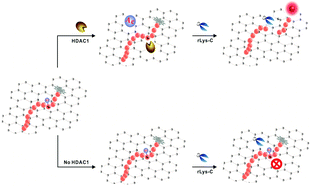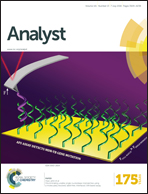Graphene oxide–peptide nanoassembly as a general approach for monitoring the activity of histone deacetylases†
Abstract
A novel fluorescent sensor using graphene oxide (GO)–peptide nanoassembly is developed for histone deacetylases (HDACs) based on deacetylation mediated cleavage of substrate peptides, which provides a simple, cost-effective platform for monitoring the activity of HDACs.


 Please wait while we load your content...
Please wait while we load your content...